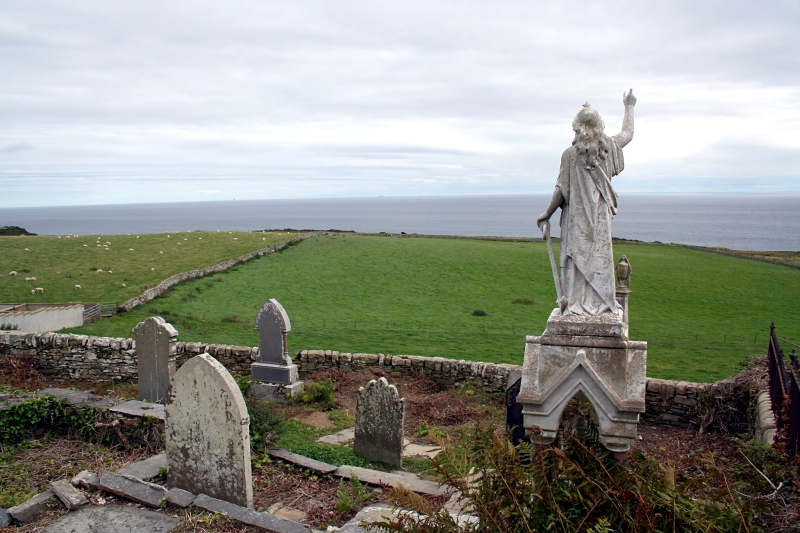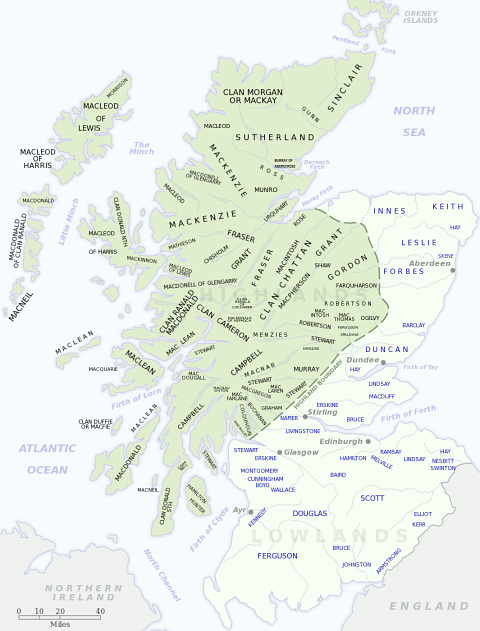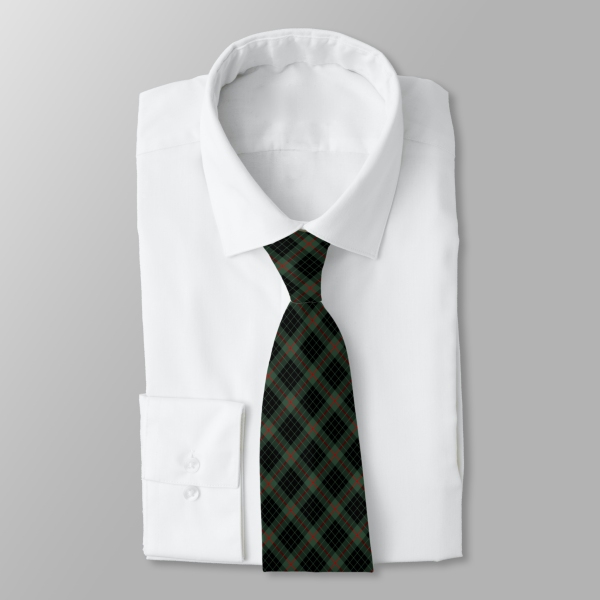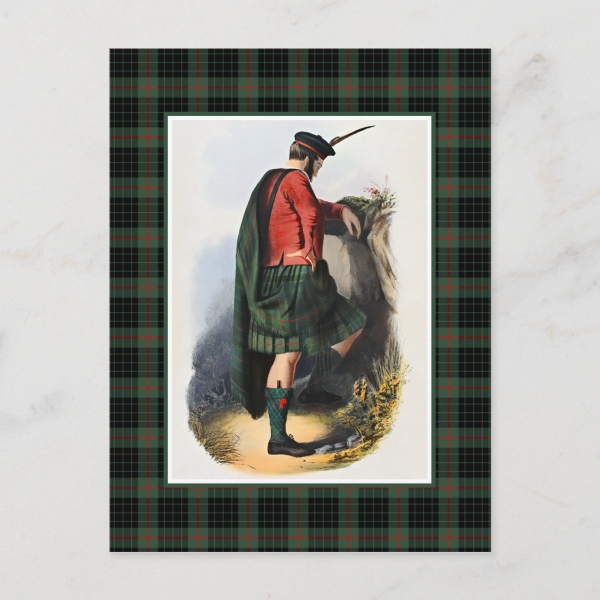
Motto: Aut pax aut bellum (Either peace or war)
Historic Seat: Clyth Castle
District: Sutherland, Caithness
Associated Surnames: Enrick, Gallie, Gaunson, Georgeson, Jameson, Jamieson, Kean, Keene, MacComas, MacCorkill, MacCorkle, MacIan, MacKames, MacKeamish, MacKean, MacManus, MacRob, MacWilliam, Mann, Manson, Nelson, Robinson, Robison, Robson, Ronald, Ronaldson, Sandison, Swan, Swanson, Will, Williamson, Wilson, Wylie
Associated Tartans:
Early Gunn Genealogy and History:
(Excerpt from "The Scottish Clans and Their Tartans", James Grant, 1906)
Of the origin of this fierce and turbulent tribe two accounts are given. In the Statistical Account of Kildonan it is stated they are descended from the Norse Kings of Man; and that Guin, their progenitor, was the eldest son of the King of that island, by his wife Christina, daughter of Farquhar, Earl of Ross, who, according to Douglas, flourished in the reign of Alexander II. But Calder, in his "History of Caithness," asserts that their progenitor was Gunnias, or Gunn, brother of Sweyne, a famous Freswick pirate, who had been banished from Orkney by Earl Harold the Wicked, and on arriving in Caithness, fixed his residence at Ulbster, where he rose to such wealth and power that in time he became known as "The Great Gunn of Ulbster."
In process of time his descendants became numerous, and were known as the Clan Gunn, and they and the Keiths bore a mutual hatred to each other, and were even at feud from the following circumstances. Lachlan Gunn of Braemore had an only daughter, Helen, who was famous for her beauty, and the day of her marriage with her cousin Alexander was fixed; but Dugald Keith, a retainer of Keith of Ackergill, whose advances she had repelled, surrounded her father's house with a body of armed Keiths, slew many of the Gunns, who were unprepared for an attack, and carried off the girl to Ackergill, where she became the victim of her abductor, and eventually threw herself from the summit of the tower.
Raid upon raid ensued now, and during one of these, in 1426, a desperate battle was fought between the two clans at Harpsdale, eight miles from Thurso, and in it the MacKays of Strathnaver, led by Angus Dhu Mackay, brother-in-law of the Lord of the Isles, bore a part against the Gunns. The conflict was rancorous and bloody, but indecisive. In 1438 they had another encounter on a greater scale on the Muir of Tannach, when victory fell to the Keiths.
George Gunn, chief of the clan in the middle of the century, lived with barbaric pomp in his Castle of Habery, at Clyth. From the office he held, Justiciary, he was known as Crouner Gunn, but by the Highlanders as Am Bráisteach Mhór, from a great silver brooch that fastened his plaid. Weary of the feud, he and the chief of the Keiths agreed to meet with twelve horsemen a-side at the Chapel of St. Tears and settle it amicably. This was in 1464. The Keiths came with twenty-four men, two on each horse, and attacked the Gunns, who were engaged in prayer; the latter fought desperately, and were cut to pieces. George Gunn was slain and stripped of his arms, armour, and brooch. Soon after, William MacKames, a kinsman of the Keiths, killed George of Ackergill and his son, with ten men, at Drummay, as they were travelling from Inverngie towards Caithness.
The Clan Gunn figure in 1581 in a case before the Council concerning the renewal of a Commission in Justiciary in favour of the Earl of Caithness, then a minor.
In 1585 the latter and the Earl of Sutherland had a fight with the Clan Gunn, who, though inferior in force had the advantage of the hillside at Aldgowne, and used their bows so well that Henry Sinclair was slain with 120 men, and the rest put to flight. Subsequently the most of the clan emigrated to Sutherland-shire under William and Henry Gunn. From Henry are descended the Hendersons of Caithness.
One of the clan, Sir William Gunn, distinguished himself by his valour in the army of Gustavus Adolphus1. He was Lieutenant-Colonel of Sir Patrick Ruthven's Dutch Regiment. In 1636, on the Plains of Weslock, he commanded the right wing of the Swedish Army under Sir John Banier, and by the skill with which he handled it, the Austrians were defeated with the loss of 5000 men, 30 pieces of cannon, and 150 standards. He was subsequently knighted by Charles I for his bravery at the Brig of Dee.
(End excerpt)
Next page: Clan Johnston
Footnotes:
1 Gustavus Adolphus: Gustav II Adolph, King of Sweden. Several Scottish brigades, who had been levied by King James VI, were under the military command of Sweden during the Thirty Years War. Read more about Scotland and the Thirty Years' War at Wikipedia.

Distribution of Scottish clans and families
View larger map at Wikimedia Commons

Browse the Clan Gunn Tartan Collection with home decor, personal accessories, crafting, paper products, and more.

Clan Gunn Postcard: Digitally cleaned and enhanced vintage illustration with tartan border.